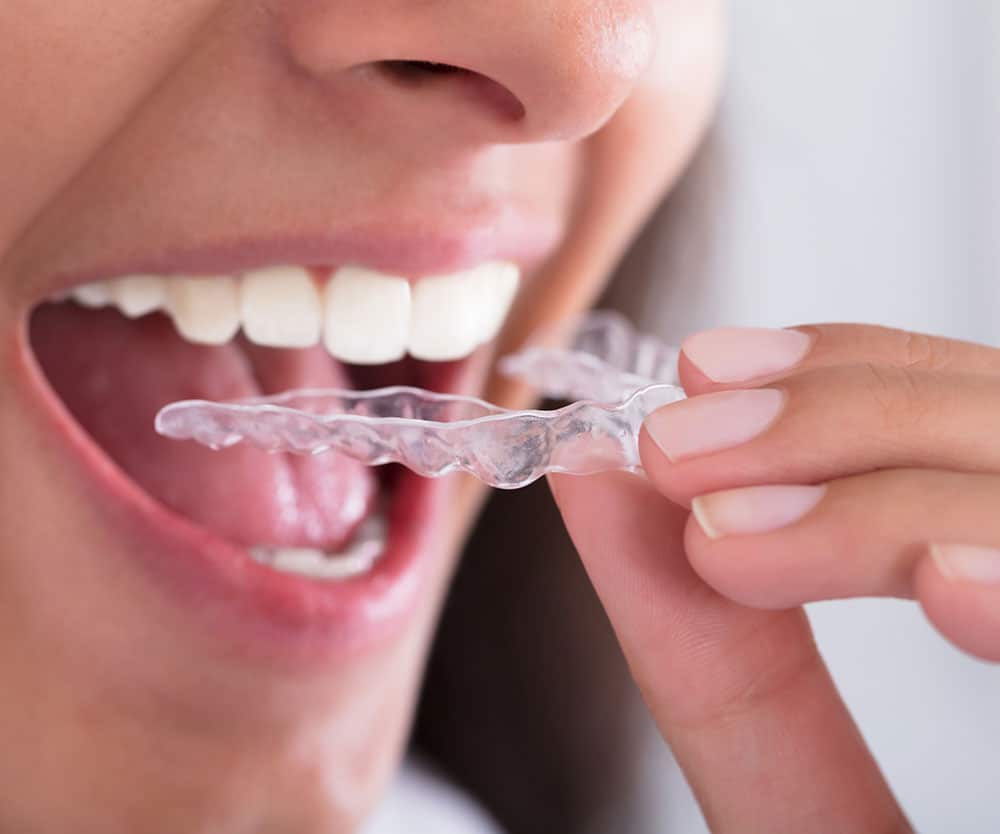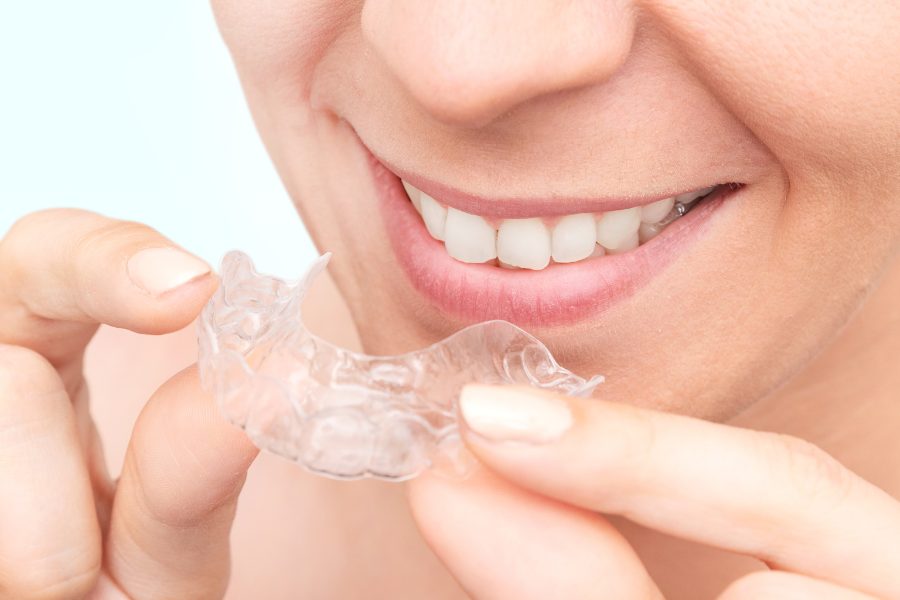
Orthodontics have come a long way over the years. In the past, correcting crooked teeth meant getting braces, but today there are other options, including Invisalign. Both braces and Invisalign work to improve your smile, but Which is Better, Braces or Invisalign? are they equally effective, or is one superior to the other? What are the pros and cons of each?
If you are wondering which is better, braces or Invisalign, keep reading and we’ll provide some insight to help you decide.
How Do Braces Work?

Traditional braces are metal, though today they are also made from other materials such as tooth-coloured ceramic, stainless steel, and titanium. Patients may also have gold-plated stainless-steel braces if they are allergic to nickel, which is a component of stainless steel, or even if they simply prefer the appearance of gold over the traditional look.
Braces are normally comprised of brackets that are attached individually to the front of the teeth with a special adhesive, though they may be custom-made to fit on the back. These brackets are then attached to an archwire with elastic O-rings. The archwire puts pressure on the teeth, causing them to move gradually, and will need periodic adjustment until the teeth reach the desired position.
Before deciding, knowing When to See an Orthodontist for the First Time? will help to make the right choice.
Advantages of Braces
If you are considering getting braces, it’s important to know their pros and cons. While they are very effective, there are some aspects that may help you determine if they are right for you.
Availability
For the average person, thinking about orthodontic treatment still conjures up images of braces before anything else. They are widely used and widely available, meaning that you should have them as an option at virtually any orthodontist that you visit.
Suitable for All Treatments
No matter how difficult your case is, or how many issues you have that need correcting, braces can be used to fix them.
Perfect Results
Braces can exert more force than Invisalign, allowing them to move teeth to the desired position.
Faster Treatment
Generally speaking, braces can close gaps and align teeth faster than Invisalign, which may be a significant factor for some patients.
Disadvantages of Braces
 On the downside, braces have the following disadvantages:
On the downside, braces have the following disadvantages:
Aesthetics
While braces are quite common and can be much less obtrusive than in the past, some patients simply do not like their appearance and may feel self-conscious wearing them.
Brushing
Brushing becomes a little more difficult with braces, as does flossing. Patients will need to follow the instructions of the orthodontist to brush properly to avoid the buildup of plaque, which can lead to staining and decay.
Food Restrictions
Braces require that care be taken with certain foods and beverages. Hard or sticky foods can cause the archwire to break, or may dislodge a bracket from the tooth, requiring repair.
Irritation
Braces can irritate the inside of your mouth as they rub against soft tissue, causing discomfort.
More Frequent Consultation
Patients with braces will have to consult with the orthodontist more frequently to have the archwire adjusted and ensure that the teeth are moving in the right direction.
How Does Invisalign Work?
 Invisalign uses clear plastic aligners to move your teeth. The orthodontist will create a 3-D image of your mouth and jaw and use this to create a plan for repositioning your teeth. They will then make a series of customized plastic aligners which, like braces, apply pressure to your teeth to gradually move them.
Invisalign uses clear plastic aligners to move your teeth. The orthodontist will create a 3-D image of your mouth and jaw and use this to create a plan for repositioning your teeth. They will then make a series of customized plastic aligners which, like braces, apply pressure to your teeth to gradually move them.
Learning if your situation is Overbite, Underbite, and Just Right Bite will be important to make the right decision.
Pros and Cons of Invisalign
Just as with braces, Invisalign has both advantages and disadvantages.
Advantages of Invisalign
Comfort
Invisalign aligners are made from smooth, BPA-free plastic, so they won’t irritate the inside of your mouth the way braces can.
Practically Invisible
For many patients, the fact that Invisalign aligners are virtually invisible is a major advantage.
No Food Restrictions
Unlike braces, Invisalign aligners can be easily removed, meaning that you can enjoy your favourite foods without fear of damaging them.
Fewer Dental Visits
When you choose Invisalign, you receive a series of aligners so that you can change them as necessary during your treatment. This means fewer visits to the orthodontist, as they do not need to make adjustments.
Easy to Clean
Brushing is easy with Invisalign; simply remove the aligners and brush your teeth as normal, being sure to also clean the aligners before replacing them. But it is not just about the aligners, you can also learn 11 Best Ways to Whiten your Teeth while using your invisalign.
Disadvantages of Invisalign
 Invisalign aligners have their own unique disadvantages, including:
Invisalign aligners have their own unique disadvantages, including:
Commitment
To get the best results, Invisalign aligners must be worn for at least 22 hours each day. Since you will remove them to eat and drink, this means that you effectively have a time limit for meals. It also means that you have to remember to replace them.
Can Get Lost
Taking them out also means that they can get lost. Although this is typically an issue for younger patients, virtually anyone can misplace them.
Tooth Discomfort
You may experience discomfort when you switch to a new aligner, as they add new pressure to the teeth to keep them moving. Likewise, when you take them out to eat, you may feel some discomfort when chewing.
Not for Everyone
Invisalign can be an excellent option for some patients, but they are not suitable for those who need to correct severe misalignment.
Choosing the Right Place to Have Your Orthodontics Done
Whether you are getting braces or Invisalign, you want to be sure that you choose the right orthodontist. Here are some tips to help you make your choice:
Recommendations
Consider checking with family members, your doctor, or even trusted family friends to see if they can offer a referral. While it’s perfectly valid for them to recommend someone as nice, or friendly, make sure the recommendation also includes other tips from this list.
Knowledge and Expertise
Consider the orthodontist’s education and credentials and whether they are keeping up with the latest advances.
Technology
While orthodontics may not make the same leaps and bounds as, say, computers, technology is advancing, and you want to be sure that your orthodontist is using the latest technology and techniques available.
Consult With More Than One Office
As with any health professional, you will want an orthodontist that you can trust and feel comfortable with. Take time to consult with more than one to see who seems like the best fit.
When asking which is better, braces or Invisalign, the answer will depend both on your personal desires and the type of treatment that you require. Braces are more suitable for severe misalignment, but Invisalign may be your preference for minor to moderate issues, especially if you want something as discreet as possible.
To learn more about braces and Invisalign, contact us today!
